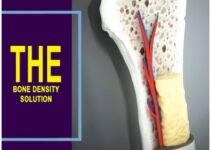Nasal polyps are outgrowths of the hypertrophied mucous membrane of the nasal cavity or paranasal sinuses. Nasal polyps have an invisible progressive course and lead to severe disturbances of nasal breathing, reduction or complete absence of smell. A consequence of the difficult breathing can be a headache, sleep disturbance, reduced performance, hearing loss, malocclusion and speech development in children.
Nasal polyps are diagnosed on the basis of the results of endoscopic examination of the nasal cavity, radiographic and tomographic study of the paranasal sinuses. Additionally, a pharyngoscopy, otoscopy, general analysis of blood, a bacteriological examination should be conducted. Nasal polyps usually should be removed surgically with postoperative anti-relapse treatment
Nasal polyps
Nasal polyps are a fairly common pathology. According to various statistics, they are observed in 1-4% of people. Mainly adults suffer from nasal polyps; men suffer 2-4 times more often than women. The formation of polyps in the nose is due to excessive growth (hypertrophy) of the nasal mucosa, which usually occurs as a result of a prolonged inflammatory process. The fact is that the nasal mucosa is constantly struggling with ongoing inflammation, trying to mitigate or compensate for any adverse reaction.
Over time, however, depletion of the protective functions of the mucous membrane happens. Then the following compensatory mechanism activates – that is an increase in the area of the mucous membrane due to its hypertrophic growths, as the result nasal polyps appear. By the way, if you want to learn a very effective method of treatment of nasal polyps, you should download the guide by Manuel Richards. It helped my friend to get rid of nasal polyps once and for all.
Causes of nasal polyps
Modern otolaryngologists consider those nasal polyps are the polyetiological disease. The factors contributing to the occurrence of nasal polyps include the anatomical structure of the nasal cavity (deviated septum, narrow nasal passages) and chronic inflammatory processes in the paranasal sinuses, allergic and respiratory diseases.
Symptoms of nasal polyps
Usually, nasal polyps grow in the ethmoid sinus and the upper part of the nasal cavity. At the beginning of its development, these changes in the nose remain unobtrusive for the patient. Over time, polyps of the nose slowly increase in size, which leads to gradually progressive difficulty in nasal breathing. To facilitate breathing through the nose, the patient begins to use the vasoconstrictor nasal drops. At first, they do provide relief by reducing the swelling of the mucosa. However, vasoconstrictor drops cease to have any effect when large size of nasal polyps. In this period the majority of patients first come to the otolaryngologist with complaints of nasal congestion and difficulty in nasal breathing.
Associated with nasal polyps, dysfunction of nasal breathing leads to fatigue patients, reducing their mental efficiency, headache and sleep disorders. Patients complain of the deteriorating sense of smell and even lack of perception of odors. Feeling of a foreign body or discomfort in the nose and various changes of taste sensations are possible also. Most patients with nasal polyps have a runny nose and frequent sneezing. They may experience pain in the sinuses.
The large size of nasal polyps leads to nasal tones of the voice. The expanded polyps may block the entrance leading from the nasopharynx to the eustachian tube, resulting in hearing loss, and leads to a violation of speech development in children. The appearance of nasal polyps in children due to the lack of normal nasal breathing leads to improper formation of the skull and dentition that is most often seen in various malocclusions. In the children of the first year of life nasal polyps and difficulty in nasal breathing lead to disorders of sucking and swallowing of food, to chronic undernourishment and malnutrition.
Complications of nasal polyps
Normal nasal breathing provides warming and moistening of the air incoming into the nasal cavity and its purification from dust particles, which deposit on the nasal mucosa and progressively is excreted with its secret. Nasal polyps, preventing the passage of air through the nasal cavity, force the patient to change nasal breathing to breathing through the mouth partially or completely. As a result, cold and dry air enters the respiratory tract. Thus, dysfunction of nasal breathing leads to the development of such diseases as pharyngitis, laryngitis, bronchitis, pneumonia. Be healthy and never get sick.





